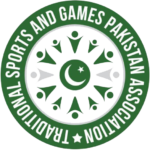Horse Dancing and Acrobatics
The sport of dressage has become very popular not only amongst professional athletes but increasingly also for private horse owners. In well-defined tests, rider and horse execute movements, which demonstrate the strength, endurance, and dexterity of the animal as well as the quality of the interaction between rider and horse. Whilst at a professional level intensive expert coaching to refine the skill set of horse and rider is standard, such an approach to progression is not usually viable for the large amateur population. In this paper we present a framework for automated generation of quality feedback in dressage tests. Using on-body sensing and automated measurement of key performance attributes we are able to monitor the quality of horse movements in an objective way. We validated the developed framework in a large-scale deployment study and report on the practical usefulness of automatically generated quality feedback in amateur dressage

Dancing Horses
One of the most well-known circus acts of the Victorian Era were those of the horses. Horse were not only used for the entertainment aspect of the shows but also for the mobility and traveling aspects too. Horses were often used to move equipment and the circus itself from city to city before the railway was introduced. Many horses were believed to have no problems handling hard training, and hard labour, but if you have read Anna Sewell’s Black Beauty, you will know that this is not always true. Especially as some circus horses were recruited from “the shafts of milk vans, butchers’ carts and even from the plough” (Croft- Cooke, 125). Just like most other circus acts, horse acts start off quite simple. For example a rider could juggle while on a horse. Over time the stunts became more elaborate and difficult. One of the more difficult horse acts was the dancing horses, popularized by Philip Astley, an English equestrian. These horses were trained by highly skilled professionals to take cues and signals from the trainers that followed the beat of a song, which in turn made it appear like the horses were dancing. (American Heritage Junior Library, 94).
Another popular horse act was a kind of acrobatic on horseback known as ‘the jockey act’ or ‘rosinbacks’. In these acts, “riders work their way from one side to the other of a galloping horse, round its neck, under its belly, hanging from one stirrup, picking up handkerchiefs off the ground, and so on” (Speaight, 57). All of these horse acts could be done solo, with just a trainer and horse, or with multiple horses; it just depended on the space. Space became an important factor in the Victorian era when performing horse acts. The circus ring size needed to be a universally measured and standardized so that “horses could find the same conditions everywhere they went” (Speaight, 44). This is a very important point as it emphasizes the need for a very strict structure for the horses. This shows how the dancing horse acts of the circus were so focused and dependent on their horses bringing in profits, they had to globally make sure that the system was standardized. There is a real problem with this as it shows that these horses are not living freely; they are as caged as they can be without being in a physical cage. One man stresses that “the tricks performed cause no cruelty whatever to the animals because they are natural movements” (Tyrwhitt- Drake, 135). However, it does not matter how natural the movements are, it is the constant factory like repetition, and hard labour that can cause the horses overworking. This strict structure, along with the dangerous, and difficult work of the circus puts horses in the same place as all the other circus animals, a mechanism of profit and business.

